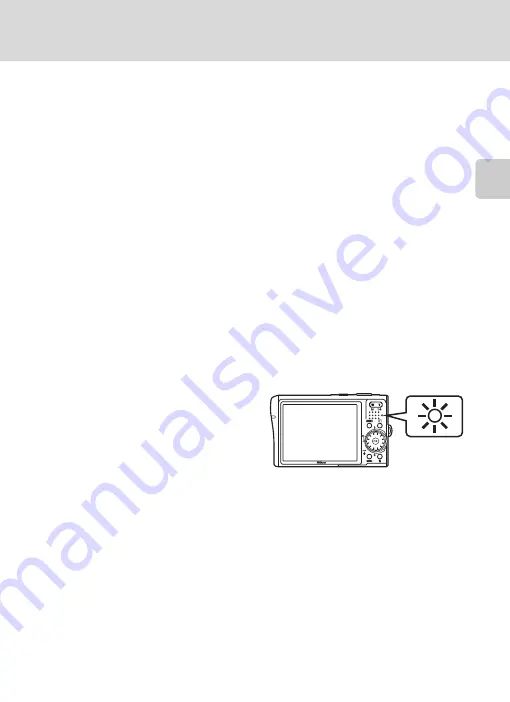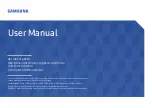
31
Using the Flash
Bas
ic Phot
og
ra
phy a
n
d
Pl
ayback:
A
u
to
Mode
j
The
B
(Off) Indicator
Note the following when lighting is poor and the flash is off (
B
). Turn vibration reduction
(
116) off when using a tripod.
• Place the camera on a flat, level surface or use a tripod (recommended).
• The
W
is displayed when the camera automatically increases sensitivity to minimize blur
caused by slow shutter speed. Pictures taken when
W
is displayed may be slightly mottled.
• When
W
is displayed, higher sensitivity is applied, and slow shutter speeds are used, noise
reduction may be automatically applied as pictures taken are recorded; results in increased
recording times.
j
Note on Using the Flash
When using the flash at a wide-angle zoom position, reflections from dust particles in the air
may appear as bright spots in pictures. To reduce these reflections, set the flash to
B
(Off) or
zoom in on the subject.
k
The AF-assist Illuminator
If lighting is poor, the AF-assist illuminator may light to assist the focus operation when the
shutter-release button is pressed halfway. The illuminator has a range of about 2 m (6 ft. 7
in.) at the maximum wide-angle position and 1.5 m (4 ft. 11 in.) at the maximum telescopic
position. The AF-assist illuminator can be set to [Off] manually (
117), although in this case
the camera may not focus when lighting is poor.
k
The Flash Lamp
The flash lamp indicates flash status when the
shutter-release button is pressed halfway.
•
On
: Flash will fire when picture is taken.
•
Blinks
: Flash charging. Wait a few seconds
and try again.
•
Off
: Flash will not fire when picture is taken.
k
Red-Eye Reduction
The COOLPIX S50c is equipped with an advanced red-eye reduction system. Pre-flashes are
fired several times at low intensity before the main flash to reduce “red-eye.” If the camera
detects “red-eye” after a picture is taken, Nikon’s own In-Camera Red-Eye Fix processes the
image as it is recorded. Therefore, there is a slight delay before the shutter-release button
operates normally to take another picture.
• Not recommended for when shutter-release timing is essential.
• Red-eye reduction may not always produce the desired results.
• In some rare cases, other portions of pictures may be affected.
Use flash modes other than auto with red-eye reduction in above cases.
















































